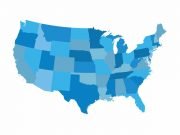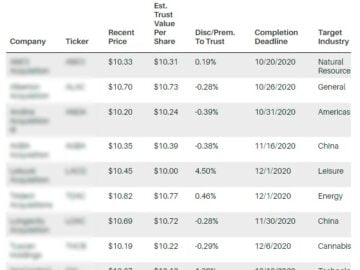Seeking out great stocks to buy is essential, but many would say it’s even more important to know which stocks to steer clear of. A losing stock can eat away at your precious long-term returns. So, figuring out which stocks to trim or get rid of is essential for proper portfolio maintenance.
Even the best gardens need pruning, and our team has spotted a few stocks that seem like prime candidates for selling or avoiding. Continue reading to find out which three stocks our team is staying away from this week.
Investors got a look at the stark reality for big-box retailers this week, and it’s not pretty. Off-price apparel and home fashion chain Ross Stores (ROST) tops our list of stocks to avoid after missing the mark for Q1 results and providing bleak adjustments to their 2022 outlook.
Ross reported Thursday that it earned $0.97 per share from revenue of $4.33 billion, where analysts were looking for EPS of $1 and $4.53 billion in revenue. The company’s results were primarily impacted by the tough year-over-year comparisons, owing to last year’s government stimulus and pent-up consumer demand from the easing of COVID-led restrictions. Also, results were affected by the inflationary pressures on consumers resulting from the Russia-Ukraine war. First-quarter operating margin of 10.8% was down from 14.2% in 2021, reflecting the deleveraging effect of the 7% same-store sales decline.
Barbara Rentler, Chief Executive Officer, commented, “We are disappointed with our lower-than-expected first-quarter results. Following a stronger-than-planned start early in the period, sales underperformed over the balance of the quarter. We knew fiscal 2022 would be a difficult year to predict, especially the first half when we were facing last year’s record levels of government stimulus, and significant customer pent-up demand as COVID restrictions eased. The external environment has also proven extremely challenging as the Russia-Ukraine conflict has exacerbated inflationary pressures on the consumer not seen in 40 years.”
It could be several quarters before the tides start to shift for Ross and other discount retailers. Recent data has shown that lower-income consumers are feeling the pinch from inflation more intensely than any other group. With their primary demographic spending less, management cautiously adjusted the company’s forecast accordingly.
Looking ahead, Ms. Rentler commented, “Given our first-quarter results and today’s increasingly uncertain macro-economic and geopolitical environment, we believe it is prudent to adopt a more conservative outlook for the balance of the year. We are now forecasting same-store sales for the 13 weeks ending July 30, 2022, to decrease 4% to 6% on top of a very strong 15% gain in the prior-year period, with earnings per share projected to be $0.99 to $1.07 versus $1.39 in last year’s second quarter. For the 52 weeks ending January 28, 2023, we now forecast comparable store sales to decline 2% to 4% versus a 13% gain in fiscal 2021. Earnings per share for fiscal 2022 are projected to be $4.34 to $4.58 compared to $4.87 in the prior year.”
Telsey Advisory analyst Dana Telsey was one of several analysts to edit their recommendations for ROST after the call, citing execution missteps and macro headwinds for the downgrade. The company continues to face challenges across the supply chain while inflationary pressures weigh on both the company and the consumer leading to a more conservative outlook. Incremental near-term pressure is likely as Ross looks to work through elevated inventory levels. We’re keeping our distance in the meantime.
Food delivery leader and pandemic darling DoorDash (DASH) was one of the big winners in the shift to stay-at-home culture. Between 2019 and 2021, DASH revenue increased by 451%, from $885 million to $4.88 billion. But now that the economic reopening is complete, DoorDash’s revenue increases are grinding to a halt. Between the third and fourth quarters of 2021, it experienced growth of just 1.9%.
DASH’s revenue came in at $1.30 billion for the fourth quarter of 2021, up 34% year-over-year. However, its total costs and expenses were up 14% year-over-year at $1.45 billion. Total current liabilities were $1.76 billion for 2021, compared to $1.4 billion for 2020.
The company is expecting $48 to $50 billion in gross order volume in 2022, implying a modest 14% increase from $41.9 billion last year. However, that’s not enough to justify DASH’s lofty valuation. Currently, the stock trades at a price-to-sales multiple of 7.4, expensive compared to top competitors like Uber Technologies (UBER), which trades at a price-to-sales multiple of 3.6 – half that of DASH.
DASH’s EPS is estimated to remain negative in 2022 and 2023. Its EPS is estimated to fall 20.6% for the first quarter. It’s Important to note that the company missed EPS estimates in each trailing four quarters. The stock has declined 54% since the beginning of the year to close Friday’s session at $66.23.
Headwinds against e-commerce car vendor Carvana (CVNA) had already been intensifying before the sizable ramp up to its vehicle inventory in the first quarter. Management recently admitted that it accelerated its car buying business at the wrong time, during a worsening economic environment, causing investors to flee the stock in search of greener pastures. CVNA could continue to burn through cash at an alarming rate as it faces threats to the value of its inventory.
“It has become clear over the past few months that the company is facing serious challenges to the business,” Morgan Stanley analyst Adam Jonas wrote in a note to clients after he downgraded CVNA to Equal Weight from Overweight and slashed the price target by 70% to $105, down from $360. “By the company’s own admission, it had accelerated growth at precisely the wrong time into a consumer slowdown leaving a major mismatch between capacity and demand, creating a liquidity crunch,” he continued.
The company’s liquidity issues are likely to be compounded as the Fed boosts benchmark interest rates, making it more expensive to take out loans. With its business model, Carvana is also at risk of a decline in used car prices as that would devalue its inventory, and a pullback in prices is likely as interest rates rise.
During Carvana’s most recent quarterly announcement on April 20th, the company reported a bigger-than-expected quarterly loss and revenue that beat analyst expectations. Results showed a $1 billion increase in equity and $3.275 billion in debt. Carvana may look like a bargain, down more than 90% from its August 2021 ATH. Still, with interest rates rising and escalating concerns of a looming recession, the company could be further wrung out as economic growth slows.














